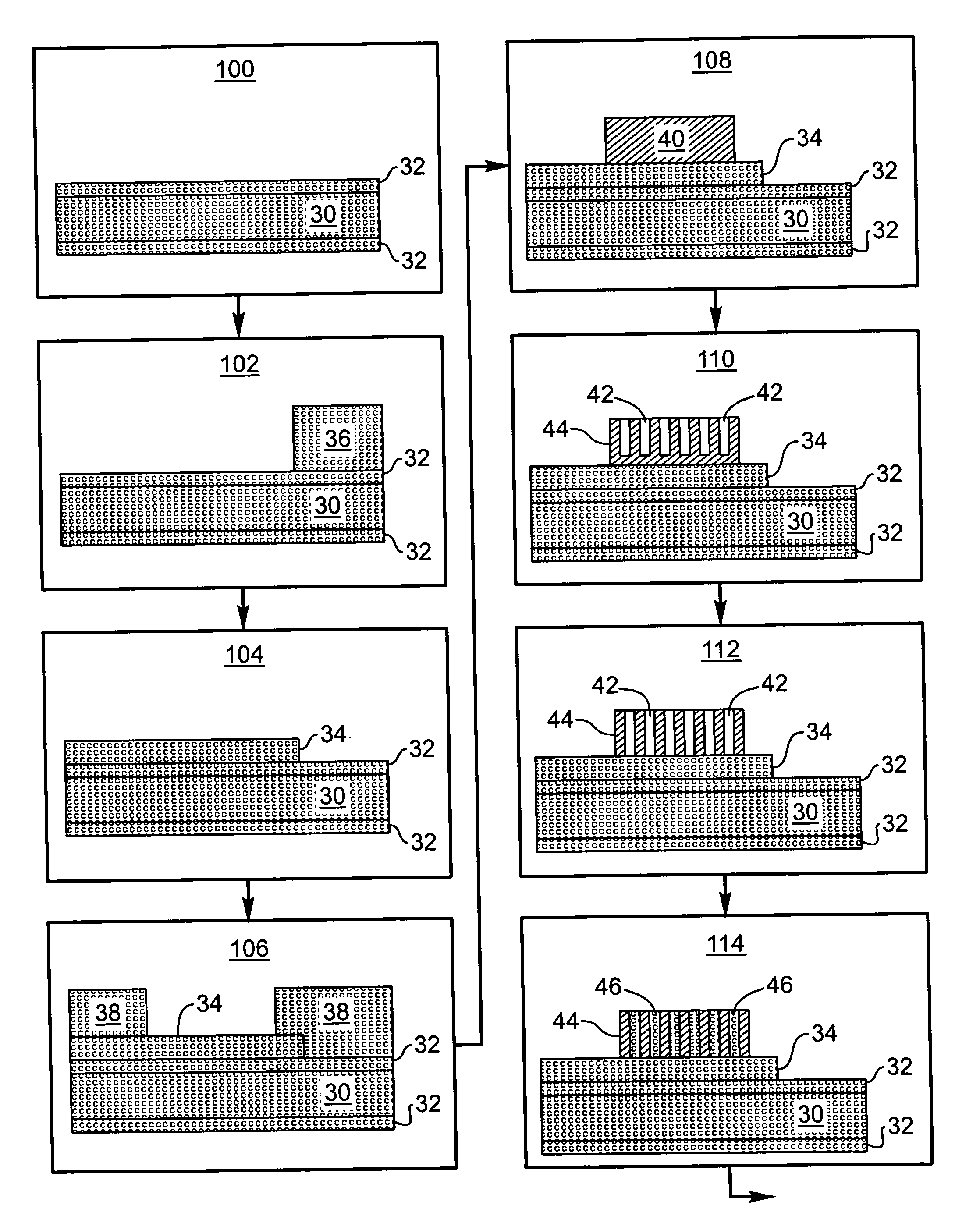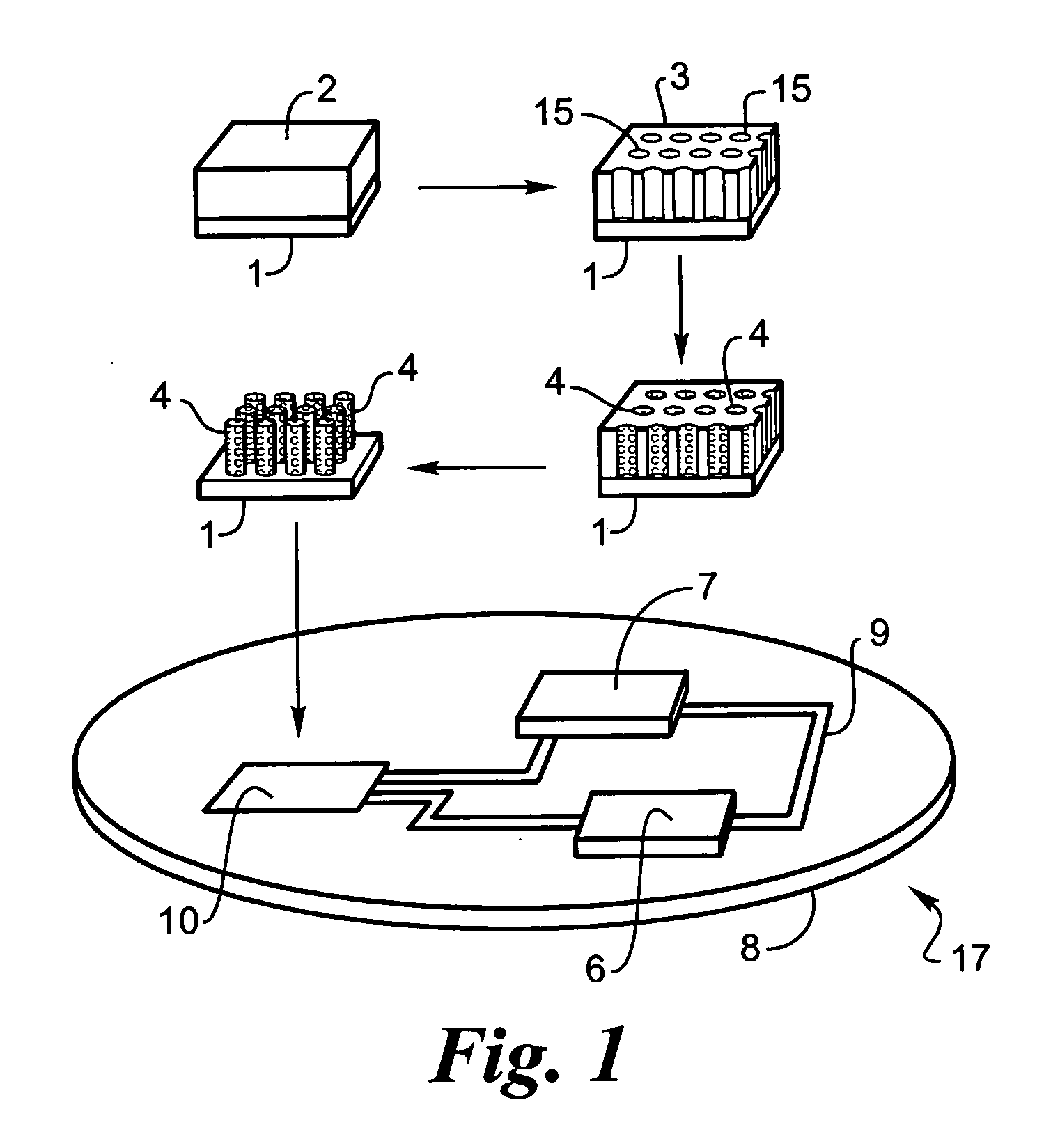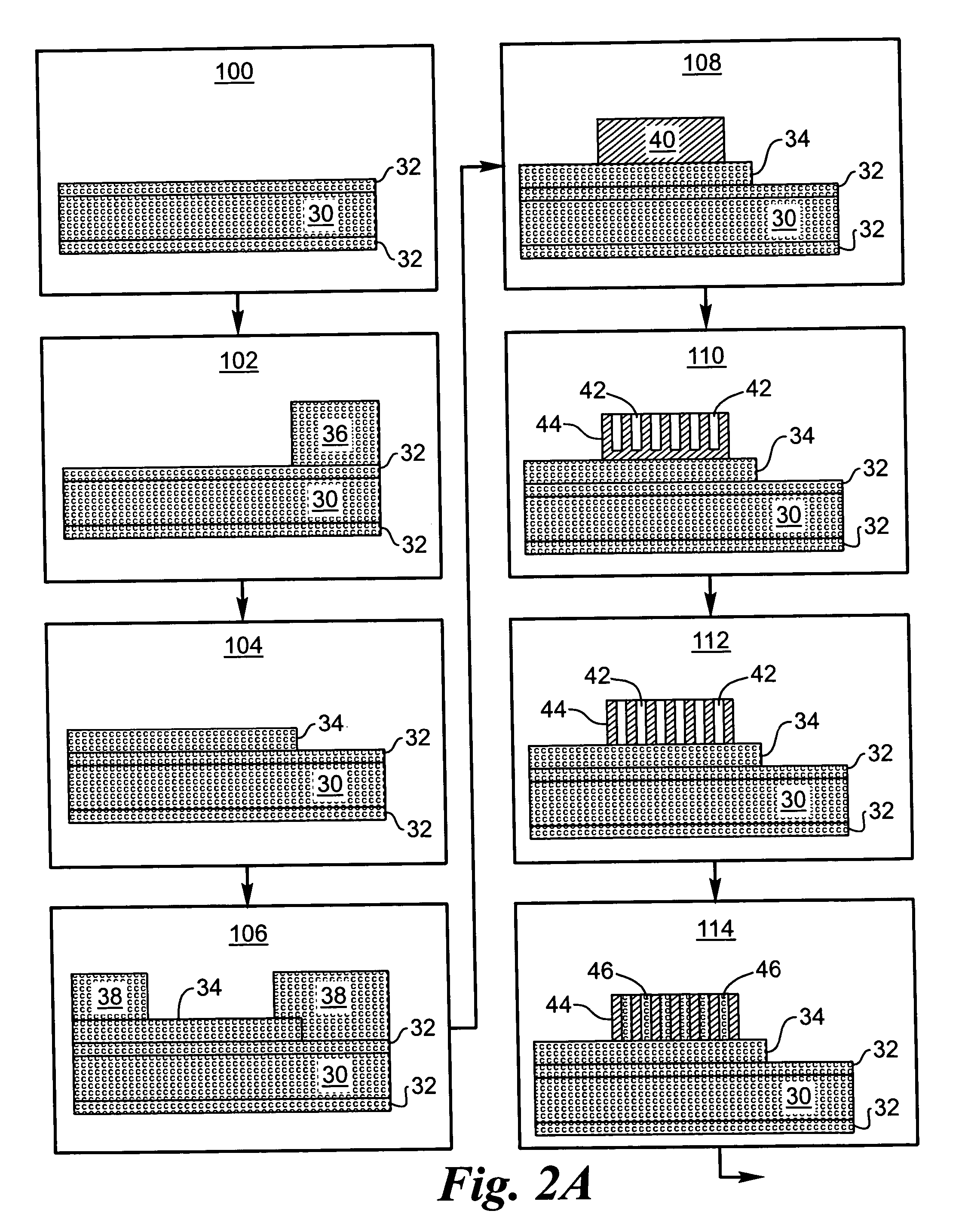Lithium-ion rechargeable battery based on nanostructures
a lithium-ion rechargeable battery and nano-wire technology, applied in the field of nano-wire-based lithium-ion rechargeable batteries, can solve the problems of manufacturers not addressing the aging issue, li-ion batteries lose only about 0.16% per month of their charge per month in storage, and the battery can lose up to about 5% of its charge per day, etc., to achieve the effect of little capacity fad
- Summary
- Abstract
- Description
- Claims
- Application Information
AI Technical Summary
Benefits of technology
Problems solved by technology
Method used
Image
Examples
Embodiment Construction
[0048] The inventor's nanowire-based Li-ion rechargeable batteries have superior electrical performance with little capacity fade and are applicable for use in many applications, including consumer electronics and medical devices. Nanowires are defined as a wire having a diameter of less than one micron. Electrodeposition fabrication of nanowires using anodized aluminum nanopore membranes as template materials is cost effective and manufacturable. The diameter and length of nanowires can be precisely controlled and the structure of nanowires can be optimized to increase the battery capacity while increasing the charge / discharge rates more than 100 times greater than that of known electrodes.
[0049] The present invention applies nanotechnology to fabricate nanowire-based Li-ion rechargeable battery cathodes that can be integrated with electronic devices, such as CMOS circuitry or other electrical / optical devices, which in turn can be powered by a Li-ion rechargeable battery that may ...
PUM
| Property | Measurement | Unit |
|---|---|---|
| diameter | aaaaa | aaaaa |
| thickness | aaaaa | aaaaa |
| diameter | aaaaa | aaaaa |
Abstract
Description
Claims
Application Information
 Login to View More
Login to View More - R&D
- Intellectual Property
- Life Sciences
- Materials
- Tech Scout
- Unparalleled Data Quality
- Higher Quality Content
- 60% Fewer Hallucinations
Browse by: Latest US Patents, China's latest patents, Technical Efficacy Thesaurus, Application Domain, Technology Topic, Popular Technical Reports.
© 2025 PatSnap. All rights reserved.Legal|Privacy policy|Modern Slavery Act Transparency Statement|Sitemap|About US| Contact US: help@patsnap.com



